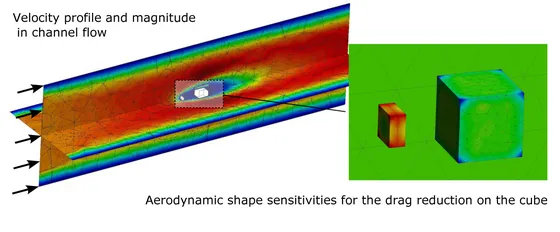Wind Engineering primarily aims to assess the wind-induced response of structures. Based upon this assessment the final design of civil engineering structures is carried out taking into consideration the wind load case. In some instances a reduction or limitation of the structural response would be desired. This can be seen as a control or optimization problem.
Several modifications and possible addition of devices could enable a reduction of the wind induced response of structures such as:
- Structural system modifications
- Auxiliary damping devices
- Aerodynamic modifications
The previous nomenclature is according to Tamura and Kareem (2013) who also introduced the notion of aerodynamic/aeroelastic shape tailoring. The latter of the listed methods deals with the proper choice and necessary modification of the shape of structural elements in order to reduce the effect of wind. Most of these aerodynamic modifications are currently driven by previous engineering experience, parametric studies and more of a trial-and-error approach on prototypes. The shape of structures and their components cannot generally be modified once built, marking this choice as decisive already early on in the design phase.
![Motivation for shape optimization of wind-excited structures (adapted from Tamura and Kareem [2013])](/fileadmin/_processed_/d/f/csm_form_opt_wind_edc56fc674.webp)
Shape optimization has been an active research and development area of the Chair of Structural Analysis carried out with partners from the automotive and aerospace industry. Successful results and aerodynamic mprovements have been achieved with the use of numerical shape optimization for reducing the drag of vehicles or maximizing the lift-to-drag ratio of aircrafts. The aim of current research is to enhance and apply these techniques to be adequate for civil engineering applications. The latter domain differs from the former ones as varying angle of attack, upstream wind fluctuations, possible interactions with surrounding constructions, larger areas of de- and reattachment and so on make it difficult to pinpoint a single relevant scenario and an adequate objective function.
Current research deals with the development of suitable numerical tools with the goal of being able to provide predictive capabilities using aerodynamic shape sensitivities and in the future a fully automated optimization framework. The functionalities should enable limiting maximum forces and displacement for the ultimate limit state and acceleration for comfort reasons in the service limit state. Moreover, the numerical tools would help assess safety and serviceability conditions for traffic on bridges under heavy wind.
